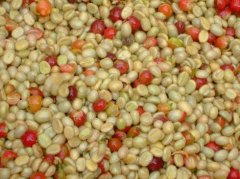The name of 90 + litchi and cello comes from the flavor and taste of Ly-cell-o.
Litchi and cello
The origin of the name: Jian Jiacheng, the champion of the Taiwan division of the 2013 World barista Competition, visited the Rose Summer Manor of 90 + that year, and after tasting the fresh fruit of rosy summer coffee, he even reminded him of the litchi fruit he planted in his backyard. Xiaolong's association with litchi quickly led us to use the first two letters "LY" in the English word "Lychee" of litchi as the first part of the name of this coffee. Then, considering the components after the name of coffee, we chose the English word "cello" from the cello. This is because once again we happened to hear the performance of the talented cellist-YOYOMA, who was deeply impressed by his exquisite performance of the cello and his careful study of performance skills, and reminded us of our earnest and studious attitude towards coffee. So we put the "O" in his name as the third part of the coffee name. This is the origin of the name "Ly-cell-o" of this coffee.
Origin: ninety + Rosa Manor in Panama
Production season: 2013-2014
Variety: Rose summer
Level:21
Altitude: 1250-1650m
Treatment method: washing
Flavor: it shows rich aromas of green tea, musk and basil herbs on the basis of its own flavor, with soft lemon acidity and sweet and sour taste similar to litchi, as well as a nutty taste similar to cashew nuts.

Important Notice :
前街咖啡 FrontStreet Coffee has moved to new addredd:
FrontStreet Coffee Address: 315,Donghua East Road,GuangZhou
Tel:020 38364473
- Prev

Introduction to the flavor description of Mexican coffee beans and the taste and flavor description of Mexican coffee.
Due to geographical and climatic reasons, the coffee growing area of Mexico is close to Guatemala, and the production classification belongs to the Central American type. The main producing areas are: Kolabegu, Australia Aluca states, the products are mostly washed beans produced in the highlands, with a good aromatic and sour taste, the grade is divided into three categories according to altitude: Aldura (219m-1280 m), Prima. Rabe Society (853-1)
- Next

Introduction to the taste and flavor of 90 + Romeki, the source of the name.
Romic Origin: 90 + Ethiopian varieties: MixedHeirloom mixed native species altitude: 1750-1900m treatment method: washing flavor: lemon sugar, green tea, almonds, crisp
Related
- Guji coffee producing area of Guji, Ethiopia: Humbela, Shakiso, Wulaga
- What is the most expensive variety of Qiloso in BOP multi-variety group?
- How to store the coffee beans bought home?
- Why are Yemeni coffee beans so rare now?
- Ethiopian Sidamo all Red Fruit Sun Sun Santa Vini Coffee beans
- SOE is mostly sour? What does it mean? Is it a single bean? what's the difference between it and Italian blending?
- Is Italian coffee beans suitable for making hand-brewed coffee?
- How to choose coffee beans when making cold coffee? What kind of coffee beans are suitable for making cold coffee?
- Just entered the pit to make coffee, what kind of coffee beans should be chosen?
- Can only Japan buy real Blue Mountain Coffee? What are authentic Jamaican Blue Mountain coffee beans?

